| The camp site was the most highly rated in El Fuerte
but the Texan owner had lost interest. No WiFi (as advertised), unusable
(filthy) toilets and showers. We moved a short distance to another site with
fewer
pretensions, but much nicer, at Hotel Bugambilias. And much cheaper. The station is about 10 miles from
the town of El Fuerte (in the middle of nowhere). However there is a well established taxi
process in place. We booked our taxi for 0730hrs (the train is at 0800hrs).
He duly arrived at 0630hrs and left a bit later. We hadn't realised we had changed time
zones. However everybody laughed and we set it up again for the following day. | 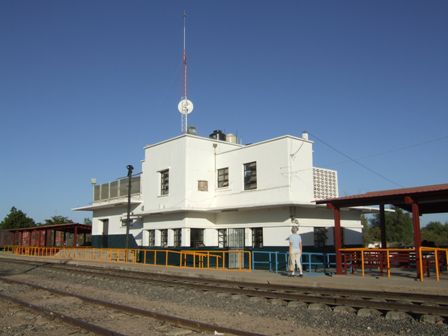 |
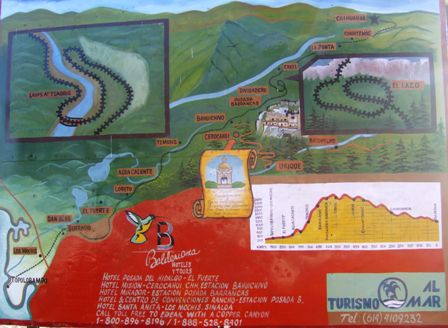 |
The single track railway runs for almost 700km from Los Mochis to Chihuahua
and climbs to almost 7900ft in the process. The first part from Los Mochis
to an hour or more beyond El Fuerte is fairly flat but then the great climb up through
the canyons begins. Beyond Creel it begins to drop away again. The whole
journey to Chihuahua takes about 16 hours, but the train never travels at
much more than 30 mph. We were only travelling from El Fuerte to Posada Barrancas, about 200km or about 6 hours, and most of the
height gain. |
| There is one first class train each way each day which
carries about 200 passengers and has a bar and restaurant car. There
is a second class train (about half the price) which follows about an hour
behind but now it only travels one way every other day, with no serv ice at
all on Wednesdays. Most of the engines are ex US EMD SD40s which date from the late 1960s and are still kept working by the
very able Mexican engineers. | 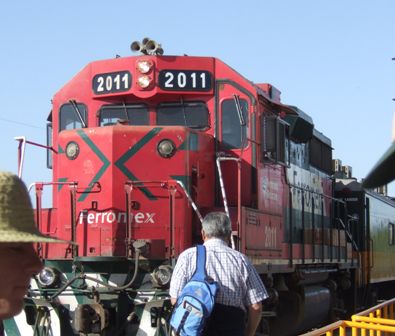 |
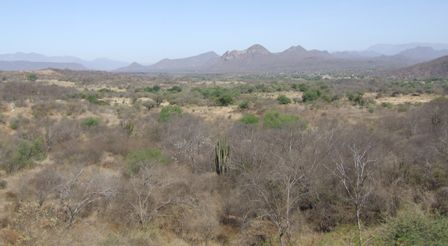 |
The first hour and a half is mainly on the flat and is scrub, much as we
had seen from the border southwards, known as the Sonoran desert, although here
it is the extension known as the Sinaloan thornforest. We are actually just
in Sinaloa here. |
| There are 36 major bridges and 87 tunnels in the
section we are travelling. This is the Rio Fuerte and the Agua Caliente
bridge is the longest on the line at 1637ft. The railway was started by an
American in 1887 as a link between the Gulf and Pacific coasts but it took
until 1961 before this section (the last and most complex) was completed. | 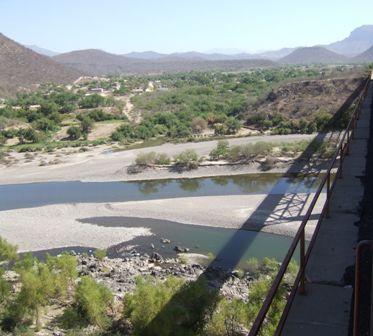 |
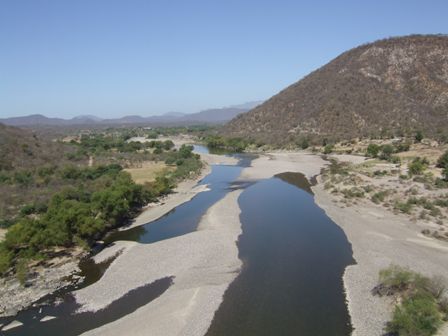 |
This is quite a major river but at this time of year it is drying up. Water
here is frequently a 'feast or famine'. Not shown but after here is the
first tunnel ( number 86) on the line which is also the longest at 5966ft. |
| Further on we cross the Chinipas bridge over the river
of the same name. This is the highest bridge on the line. | 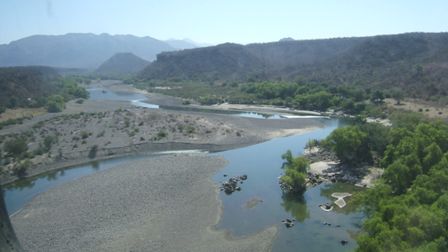 |
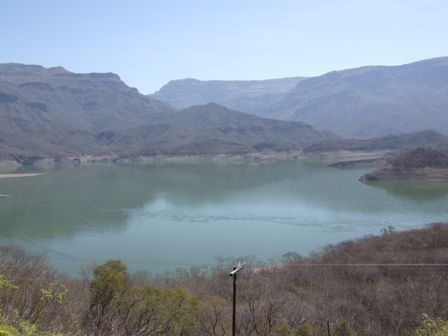 | For the next 16 miles we skirt the edge of Lake Munais. |
|
Water always adds a touch of serenity in a landscape. | 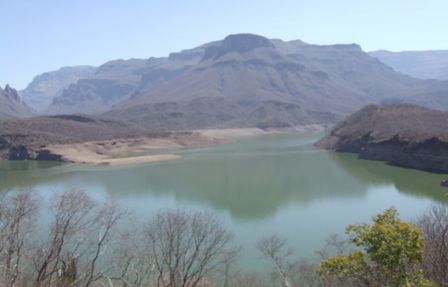 |
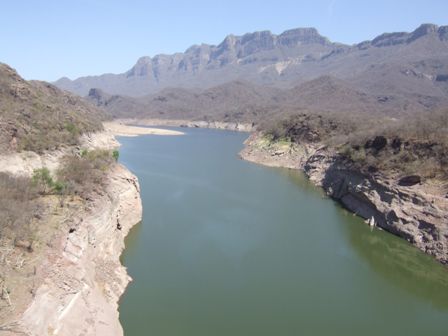 | It seems odd with the rivers drying up that such a
huge inland expanse of water remains. But if you look at the high water mark
where the vegetation begins you can see how far the water rises when the rains do come. |
|
Back to the river bed as we move up the Septentrion canyon. Copper Canyon is
just one of about 30 deep canyons which make up this complex. The green
lines edging the now stream bed are caused by new growth appearing in stages
as the water dried up. | 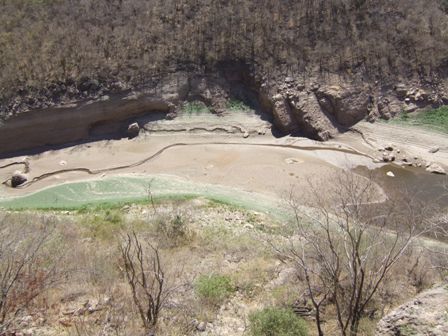 |
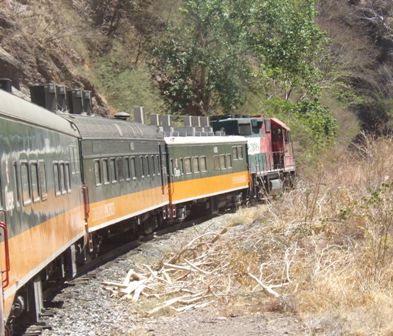 | The train is constantly climbing. The carriages with
their heavy air conditioning are over 60 tons each so the locomotive works
hard to haul its 300 ton load. All this for about 40 passengers today plus about
15 crew. One begins to understand why they do not expect the train to still
be running five years from now. The restaurant car is nearest the engine, then the
bar car, then the three passenger cars. |
|
The bar car is mostly empty today. In peak season the train can be full and
this area may be used as an overflow. Coffee was served in the restaurant
car. | 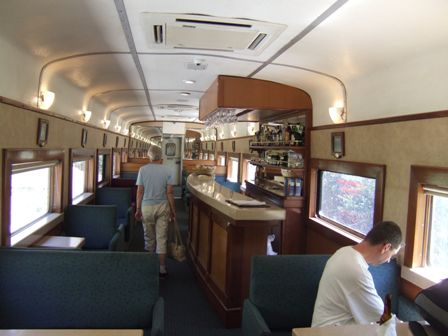 |
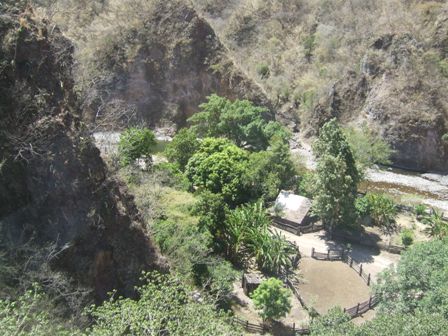 | Often the train creeps along the canyon wall while
small homesteads of the Tarahumara Indians nestle in the canyon bottoms.
Around 10,000 Indians are reputed to live in the canyons. |
|
There are many tight curves, often on bridges such as this one just before Temoris station. It is small wonder that this is regarded as one of the
truly amazing railway journeys in the world. | 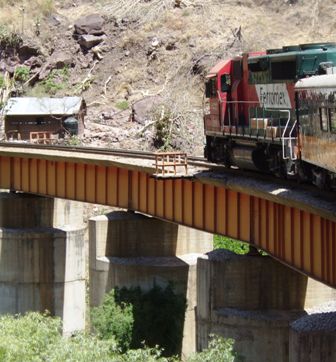 |
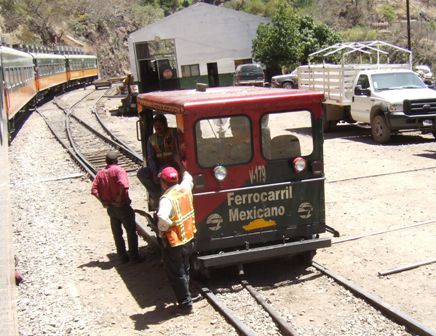 | Such a complex track requires significant maintenance
and we saw over 50 men working in various places on the trip. This little
unit in Temoris station would be used to pull supplies and men to remote
locations. The track is mostly in good condition with a lot of concrete sleepers and
continuously welded rail, very expensive for a lightly used, low speed
railway. But then labour here is cheap. |
|
This is taken from above Temoris station. The train has come in on the left
side of the canyon around the curve. Then it crosses the river via a curved
bridge at the head of the canyon and into the station. It then leaves on the
right hand side going away from you (rising all the time). It then
disappears into a tunnel where it curves round 180˚ and
returns back towards us several hundred feet higher to where the
photo is taken from. And then onwards. | 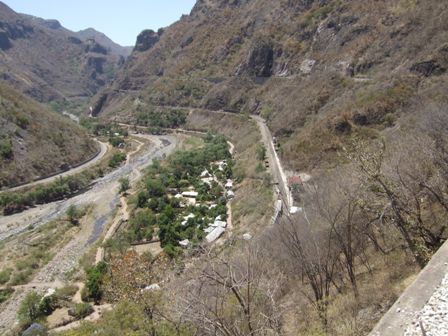 |
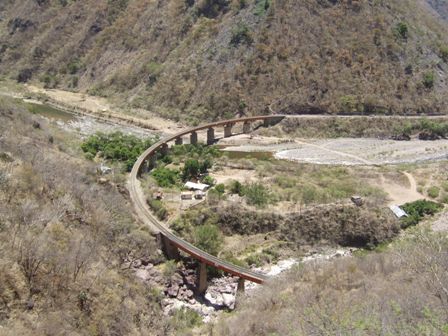 | The curved bridge mentioned above. This particular
section is one of the real feats of engineering on the line. |
|
The landscape becomes more wooded and slowly the tree types change to
include more conifers. | 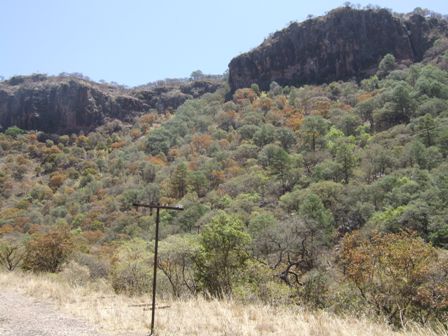 |
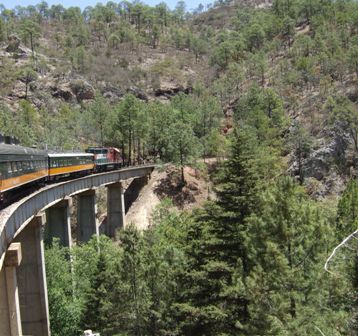 | And the bridges and tunnels become almost constant as
the line hops from one valley to the next. |
| For some time we have seen little sign of habitation
and no roads or tracks. Now we are in much higher elevations and begin to
see tracks reach out from the settlements at Creel. They are building paved
roads from El Fuerte into the canyons to complete the link but that has some
way to go yet. For the moment there is no road in from the west. | 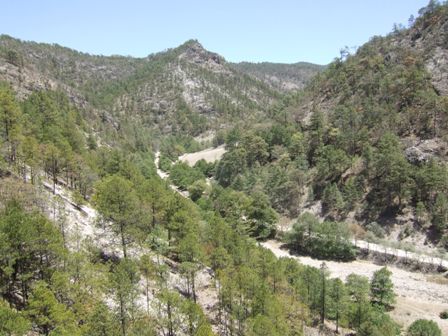 |
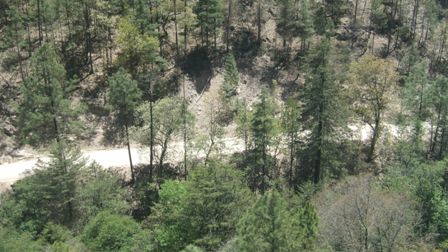 |
We did see a bus on this dirt road. That must be a hair raising journey.
From Creel to Batopilas (in an adjacent canyon) it takes over eight hours by
dirt road to drop down to the canyon floor and has many sections with sheer
drops. |
| It is now nearly all conifers and other high altitude
shrubs. It can get quite cold here in winter. | 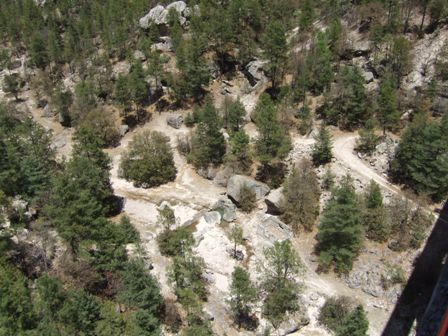 |
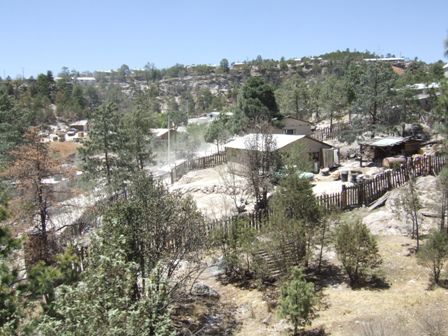 |
We are beginning to see more signs of habitation. Although mostly Tarahumara
Indians, there is also a significant Mennonite population here plus ordinary
Mexican families and other immigrants. Note that from here to Creel is about
2 hours by road and then it's another 5 hours to Chihuahua and that's the
only way in by road. |
| At San Rafael the trains cross and many of the crew
change. This includes the armed guard who now travels on the train after
bandits held it up in 1999 and killed a tourist who thought it was part of
the show and tried to film them. | 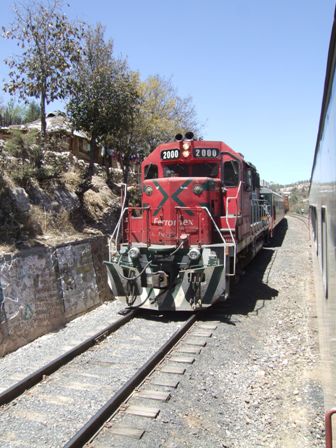 |
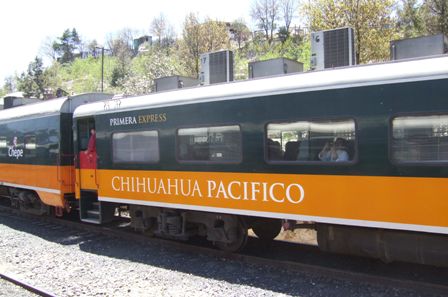 |
The carriages certainly look smart although I know that companies in the UK
are forever rebranding themselves as though a coat of paint would fix
everything. |
| And so to Posada Barrancas where we left the train to
stay at a farmhouse B&B. We had met a small group of Americans from
Philadelphia who were travelling with a guide and he persuaded us to join
them. He also acquired a lone Frenchman who joined our little band. We
walked to our lodging which was only a few hundred yards away, although the
owner had met the train with a station wagon and took the bags for us. | 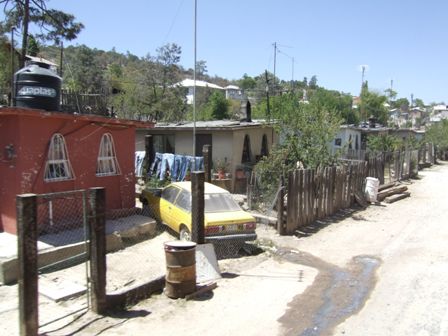 |
|